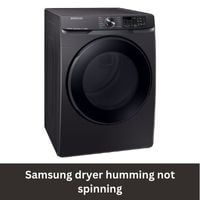Takagi tankless water heater increase temperature
Takagi tankless water heater increase temperature. A tankless water heater, also known as on-demand or instantaneous water heater, is a more energy-efficient option for heating water compared to traditional tank water heaters. One popular brand of tankless water heaters is Takagi.
These units heat water as it flows through the device, eliminating the need to store and constantly heat a large tank of water. However, sometimes the water coming out of the Takagi tankless water heater may not be hot enough for certain uses. In this article, we will discuss how to increase the temperature of a Takagi tankless water heater.
Related: Gas Water Heater Keeps Shutting Off
Takagi tankless water heater increase temperature

Here are are the possible reasons causing Takagi water heater to increase the temperature:
Check the Temperature Settings
The first step in increasing the temperature of a Takagi tankless water heater is to check the temperature settings.
Many Takagi models have a digital display that allows you to easily adjust the temperature settings. Make sure the temperature is set to the desired level, and if not, adjust it accordingly.
Check the Incoming Water Temperature
Another factor to consider when trying to increase the temperature of a Takagi tankless water heater is the incoming water temperature.
If the incoming water is already hot, the unit will not have to work as hard to heat the water to the desired temperature.
If the incoming water temperature is low, it will be more difficult for the unit to heat the water to a higher temperature.
Check for Scale Buildup
Scale buildup can also affect the performance of a Takagi tankless water heater. Scale is a buildup of mineral deposits inside the unit that can decrease the efficiency of the heating process.
To check for scale buildup, remove the cover of the unit and inspect the heat exchanger. If you notice a buildup of scale, it will need to be removed.
Check for Venting Issues
Another potential cause of low water temperature in a Takagi tankless water heater is venting issues. Proper venting is necessary for the unit to function correctly and efficiently.
If the venting is not adequate, it can cause the unit to work harder to heat the water, resulting in lower water temperatures.
Check the Flow Rate
Lastly, check the flow rate of the unit. If the flow rate is too low, the unit will not be able to heat the water to the desired temperature.
The flow rate is the amount of water that is flowing through the unit at a given time. If the flow rate is too low, the unit will not be able to heat the water quickly enough to reach the desired temperature.
FAQs
How do I know if my Takagi tankless water heater’s temperature is set correctly?
You can check the temperature settings on the digital display of your Takagi tankless water heater. Make sure that the temperature is set to the desired level.
If you are unsure of what the correct temperature setting should be, consult the owner’s manual or contact the manufacturer for guidance.
Can scale buildup affect the temperature of my Takagi tankless water heater?
Yes, scale buildup can decrease the efficiency of the heating process and affect the temperature of the water coming out of your Takagi tankless water heater.
Scale is a buildup of mineral deposits inside the unit that can decrease the efficiency of the heating process. It’s important to have regular maintenance to prevent this issue.
How can I increase the flow rate of my Takagi tankless water heater?
Increasing the flow rate of your Takagi tankless water heater can be achieved by adjusting the water pressure, installing a larger water pipe, or by increasing the flow rate of the unit.
To increase the flow rate of the unit, you may need to adjust the water pressure, install a larger water pipe, or consult a professional plumber or the manufacturer for assistance.
Conclusion
Increasing the temperature of a Takagi tankless water heater can be achieved by checking the temperature settings, incoming water temperature, scale buildup, venting issues and flow rate. If you are unable to resolve the issue by yourself, it is always recommended to consult a professional plumber or the manufacturer.



